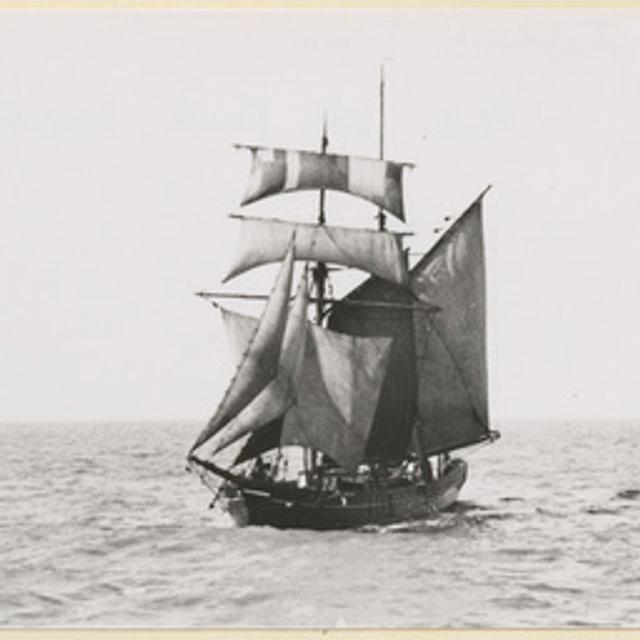George Nicholson
Vessel Name: Flying Foam
George Nicholson
Fell overboard; body not recovered
19 October 1867

Flying Foam 1870
George Nicholson was a sea man residing in Geraldton. Like so many souls lost to the sea, we know little about George. He does not seem to have come to the attention of the authorities, and his tragic end warranted no more than a single sentence in a local Midwest newspaper. Was he a jump-ship? Was he married? Did he have family? Was George Nicholson his real name? How old was he?
What we can ascertain is that in 1867 George was working on the Flying Foam under Master Cobb, servicing the fishing and pearling settlements between Fremantle and Nickol Bay. Flying Foam was a “coaster”. She carted pearl shell from the pearling fields to Fremantle and returned with supplies and crew for the master pearlers along the WA coast. To maximise income, Flying Foam took cargo and passengers to the settlements along her route.
Flying Foam was reported to be a fast and solid sea boat, built in 1861 as a 33 ton two-masted schooner by William Jackson for John and Walter Bateman, merchants and owners of many vessels. She measured 60 feet in length, 15.75 feet across the beam and had a draft of 6.9 feet [18.2 x 4.8 x 2.10]. She was registered at Fremantle as No. 3 of 1861. Her official number was 36544. Flying Foam was sailed competently by Master Cobb.
On 30 October 1867, the Inquirer and Commercial News printed a single sentence in its Shipping News, stating “one of the crew, by a sudden lurch of the vessel, was knocked overboard”. The article did not mention whether Flying Foam took pains to locate George once he was in the water. So, George was lost somewhere off the coast of Geraldton, and his body was not recovered.
Flying Foam continued her coastal voyages carrying pearl shell to Fremantle for the pearling industry and returning with supplies required to maintain boats and crews. In 1871 she had three changes of Master. Early in March 1872, she sustained damage to her stern when she struck the Fremantle jetty. The damage was patched with canvas, and she carried on to Champion Bay.
On 7 March Flying Foam left Geraldton, on her usual route under the charge of Master Reeve. She was last seen southbound off the Geraldton coast by the May. This report seems at odds with Flying Foam’s northward voyage. Was there a problem that forced her to return to port? Or was the May mistaken?
Flying Foam disappeared with all hands. She was not seen or heard from again. It was thought that she was caught in a cyclone that struck the northwest coast on 10 March and was either swamped or capsized and sank with her crew and three passengers: Arthur Patten, his wife and child.
There was a collection of alms for the widows and children of Flying Foam. This was the usual practice when a boat was lost. A “subscription” was called in the local newspapers, and people donated what they could. Fishermen did not enjoy large incomes, and many lived from irregular pay to pay. There was no compensation for lost fishers’ families. The subscription was generally placed in the hands of local clergy, who dispensed it among the widows and children left behind.
When a single life was lost, as in George’s case, the church could call for subscription for the family when they did not have family or friends to assist. Since widows and children had no other income, it often fell to friends to donate directly to the widow until she was able to return to family or find some other kind of income.
Another recipient of the subscription was Mrs Brown, whose husband (Brown, also known as Johnson) was aboard the Flying Foam. This unfortunate lady lost her three-year-old son, Thomas David a few weeks later. On 2 May 1872, little Thomas David Brown was playing below the sea wall on South Beach in Fremantle. He fell into a water hole and drowned before help could be rendered. Mrs Brown’s first husband was lost between Fremantle and Roebourne five years before.
The vessel’s registration was cancelled on 22 May 1872.
